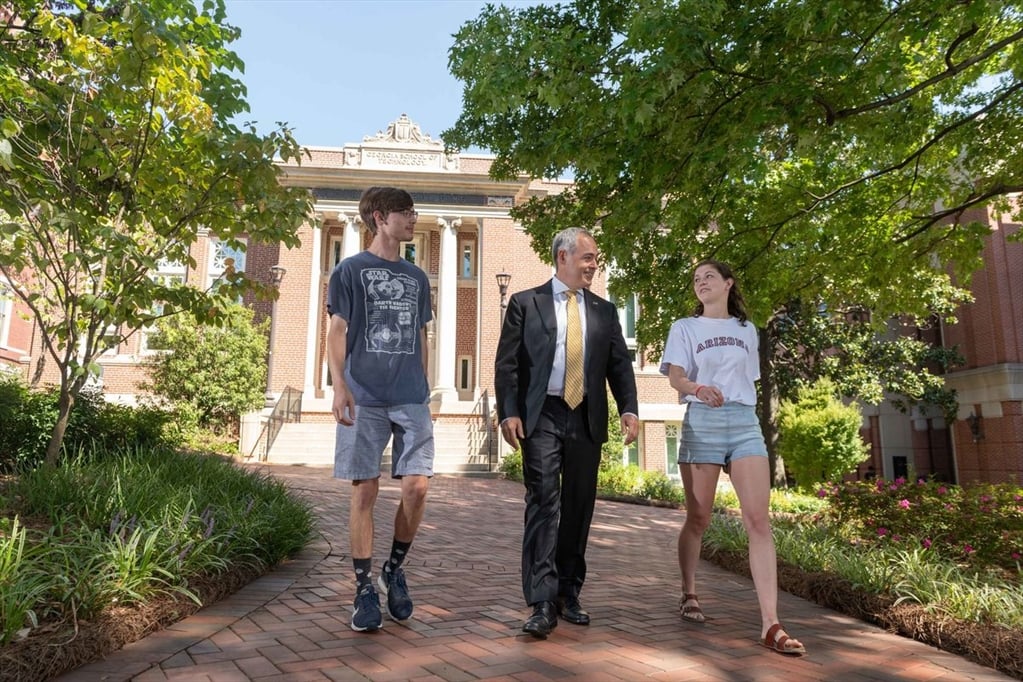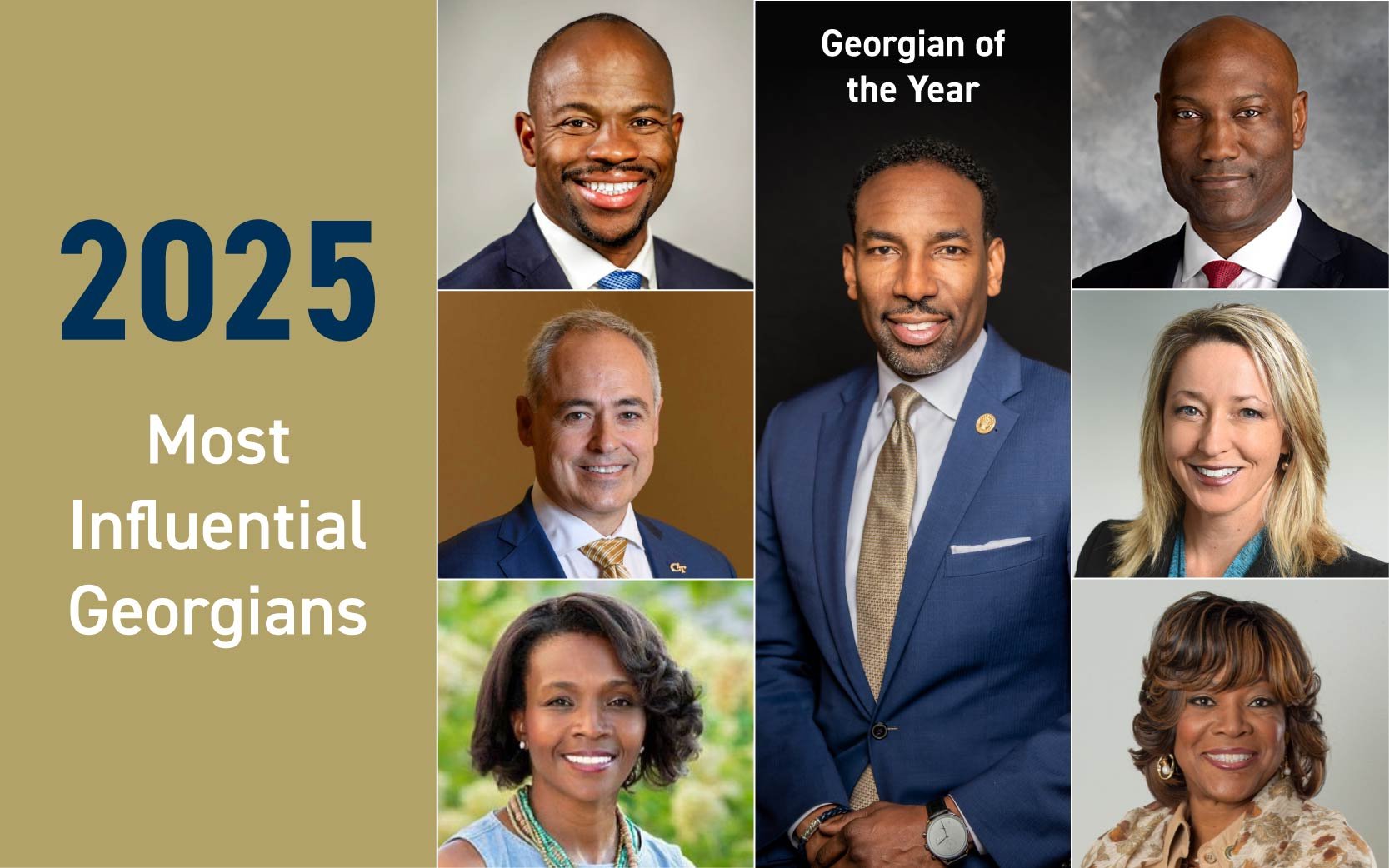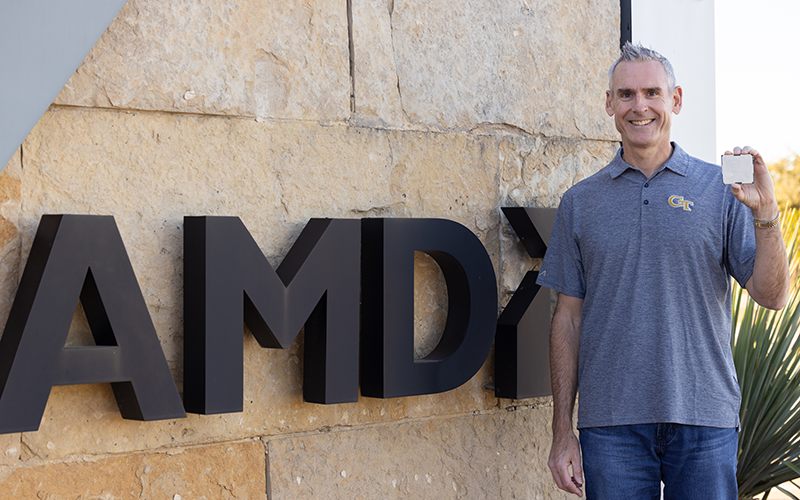A Sustainable Future
| Categories: Alumni Achievements

Q: Where did you get your appreciation of nature?
I was raised in Madrid, Spain, and grew up hiking in the mountains around the city and around the country. I’ve always been interested in nature, how important it is, and what each of us can do to protect it. Georgia Tech’s mission is to advance technology and improve the human condition. That requires that we ask ourselves how we can drive progress in a way that’s compatible with a healthy planet. That’s one of the most essential questions that we face as a species
Q: How is Georgia Tech helping answer that question?
We’re already a leader in many disciplines that are essential to building a sustainable future. From clean energy generation and the smart distribution, storage, and use of energy to efficient supply chains, transportation, and new materials, we are helping find new solutions. We’re also studying how rising sea levels will affect communities far and near, including those on our own Georgia coast, and what we can do to deal with these effects. Very importantly, we’re developing leaders in business and public policy that will help find solutions we cannot imagine yet. Now our focus with the Sustain-ability Next initiative is figuring out how those pieces come together so we can be more coordinated and have an even bigger impact.
Q: What does a sustainable future look like to you?
Humans are living longer and healthier lives than at any other time in history. Science and technology have been key drivers. But the very technologies that have brought so much prosperity to a population that will soon reach 10 billion are also testing the capabilities of our planet. Our challenge is not to stop progress, but to continue to drive progress for everyone in a way that keeps our planet healthy and plentiful for generations to come. This idea is reflected in the United Nations Sustainable Development Goals (SDGs), which have been endorsed by the entire world. The SDGs include environmental objectives but go well beyond. They are also about how to provide health, education, food, clean water, security, and opportunity to everyone. The ultimate goal isn’t to regress but to find ways to increase human well-being while ensuring the health of our planet. At Tech, we are uniquely equipped to make a major difference in achieving these goals. I get excited about how all these bright people can create solutions to these challenges.
Q: You helped found and now chair the University Global Coalition, a global partnership of higher education institutions in support of the SDGs. How did the idea for this start?
When I was in business school, I realized businesses should be a huge part of the solution to these challenges, but that business schools weren’t doing a great job of conveying that idea to future business leaders. At the time, I was an advisor to the United Nations Global Compact, and I led the creation of the Principles for Responsible Management Education. It’s a framework that has been adopted by more than 800 business schools around the world and commits them to educating future business leaders who understand their responsibilities. When I became a university president, I had seen firsthand how academic institutions can lead, and how we are particularly well-suited to be conveners of other actors, such as businesses and government. I then partnered with other universities around the world to create a coalition of institutions that shared that idea and that were willing to collaborate to have a much greater impact.
Q: What can alumni do?
The number one thing that they can do is incorporate responsible management into their business practices. Our alumni lead companies, and they lead departments within companies, that use energy, manufacture products, and use natural resources. They can use their platforms and influence to incorporate responsible business practices. Of course, they can also help their alma mater do what we do, which means engaging with us as we create new programs and engaging philanthropically to help fund those programs.
Q: You've seen Tech alumni and faculty named "Explorers" by the National Geographic Society, where you serve on the board. Can you talk about your role in Nat Geo?
National Geographic is an iconic organization. We’ve all grown up reading the magazine, but Nat Geo does a lot more than that. It finds leaders around the world and invests in them so they can make a bigger impact. One thing we’ve done since I’ve been part of the board is to create a new mission that is focused not only on powerful story-telling, but also on protecting our treasures to illuminate and protect the wonder of our world. It’s exciting to see Georgia Tech faculty and alumni recognized as Explorers for that work, and my hope is that we’ll see even more both faculty who are doing revolutionary things in developing technology and students who themselves will be leaders of change.


